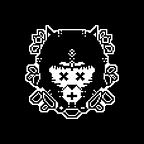Cinemachine: Unique Types of Body Settings in Virtual Cameras
Let’s take a look into the unique type of Body settings in virtual Cameras!
Body Algorithms
There are six types of Body algorithms we can use in virtual cameras.
Algorithms
- 3rd Person Follow
- Framing Transposer
- Hard Lock to Target
- Orbital Transposer
- Tracked Dolly
- Transposer
Each algorithm has its own set of properties. I’ll expand on this later.
Binding Mode
The binding mode has different selections when interpreting the offset from the target, and the damping. World Space coordinates will always be 0,0,0, which is ideal for a “Door Cam or Hood Cam” in a racing game.
Types of Binding Modes
The Body Algorithms “Transposer” and “Orbital Transposer” features Binding Modes.
- Lock To Target on Assign: Uses the Follow target’s local frame at the moment that the Virtual Camera is activated or when the target is assigned.
- Lock To Target With World Up: Make the Virtual Camera use the Follow target’s local frame with tilt and roll set to 0. This binding mode ignores all target rotations except yaw (the Y-axis). It is best used when the Look At target is the same as the Follow target.
- Lock To Target No Roll: use the Follow target’s local frame, with roll set to 0 (Z-axis).
- Lock To Target: use the Follow target’s local frame with pitch, roll, and yaw in mind.
- World Space: The offset in world space relative to the Follow Target’s origin. The camera will not change position when the target rotates.
- Simple Follow With World Up: Interpret the offset and damping values in camera-local space. This mode emulates what a cameraman would do when following a target.
Binding Mode Examples
The follow and Look At property has a target to follow and aim. Down below you can see two examples from each mode and different targets, the drone, and the project manager. What you will notice is that many binding modes act quite similarly, besides the “Simple Follow With World Up” mode.
Lock To Target on Assign
Lock To Target With World Up
Lock To Target No Roll
Lock To Target
World Space
Simple Follow With World Up
Body Algorithms
The Body Algorithm moves the Virtual Camera in the scene when a Follow target is active. Each Body Algorithm is unique for specific movements. Let’s have a brief look at the algorithms.
3rd Person Follow
Pivots the camera horizontally and vertically while keeping a constant position and distance relative to the Follow target.
Framing Transposer
The Framing Transposer moves in a fixed position with the Follow target. It is best used for side-scroller games.
Hard Lock To Target
The Hard Lock To Target algorithm uses the same position as the Follow target. It is great for a mounting point of a moving target such as a hood of a car.
Orbital Transposer
The Orbital Transposer rotates around the Follow and Look At target. The algorithm must have a Look At target to rotate around. It allows you to rotate freely or constrain around the target without code!
Tracked Dolly
The Tracked Dolly algorithm tracks and moves along a path. We need to create a game object with a Cinemachine Path component for the setup of the track. It is great for showing environments through a set of waypoints.
Transposer
The Transposer algorithm moves in a fixed relationship to the Follow target.
Conclusion
Now that we have an idea for each Binding Mode and Body algorithm, we can experiment messing with the properties of each type! I will go in-depth about some of the algorithms in my next medium post.
Gabriel
